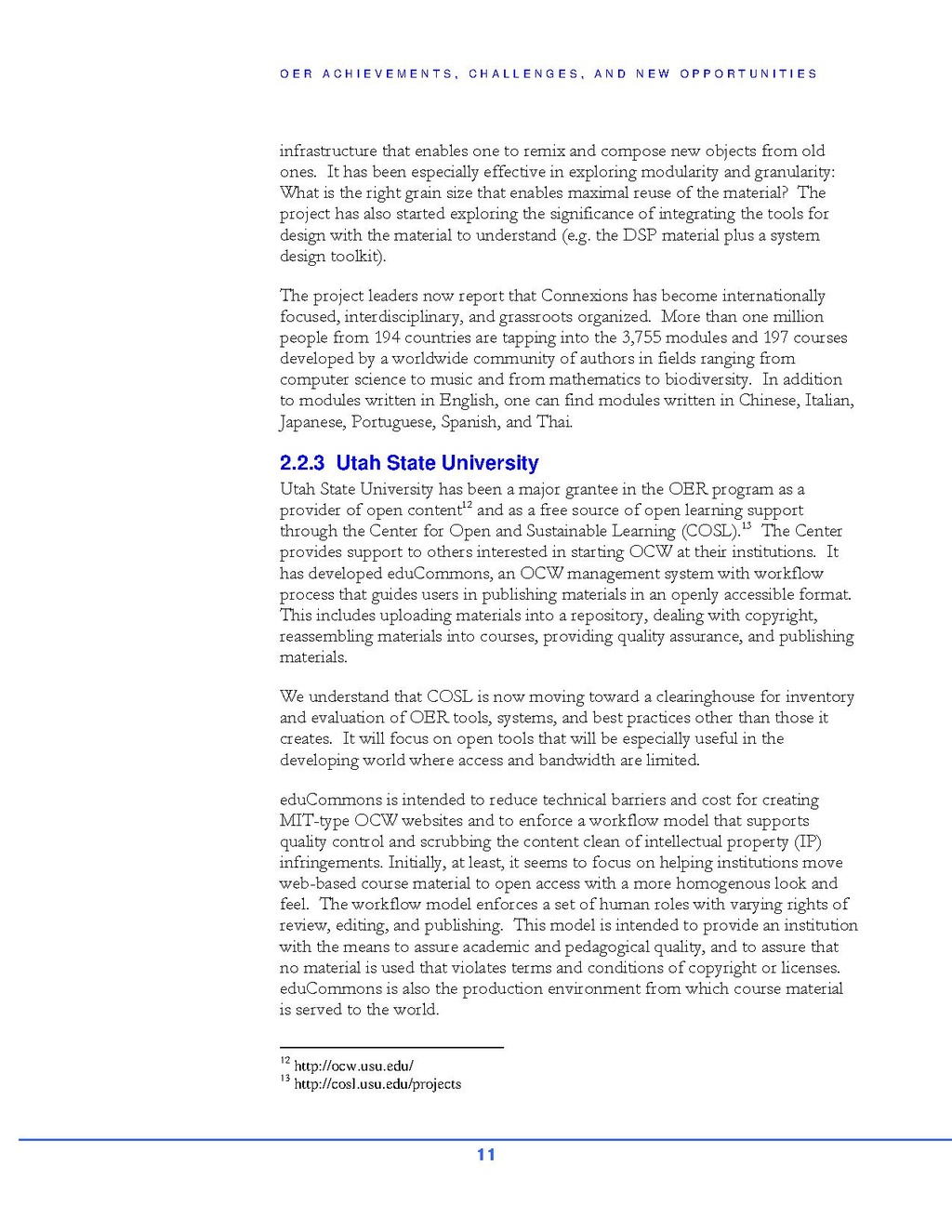OER ACHIEVEMENTS, CHALLENGES, AND NEW OPPORTUNITIES
infrastructure that enables one to remix and compose new objects from old ones. It has been especially effective in exploring modularity and granularity: What is the right grain size that enables maximal reuse of the material? The project has also started exploring the significance of integrating the tools for design with the material to understand (e. g. the DSP material plus a system design toolkit).
The project leaders now report that Connexions has become internationally focused, interdisciplinary, and grassroots organized. More than one million people from 194 countries are tapping into the 3,755 modules and 197 courses developed by a worldwide community of authors in fields ranging from computer science to music and from mathematics to biodiversity. In addition to modules written in English, one can find modules written in Chinese, Italian, Japanese, Portuguese, Spanish, and Thai.
2.2.3 Utah State University
Utah State University has been a major grantee in the OER program as a provider of open content[1] and as a free source of open learning support through the Center for Open and Sustainable Learning (COSL).[2] The Center provides support to others interested in starting OCW at their institutions. It has developed eduCommons, an OCW management system with workflow process that guides users in publishing materials in an openly accessible format. This includes uploading materials into a repository, dealing with copyright, reassembling materials into courses, providing quality assurance, and publishing materials.
We understand that COSL is now moving toward a clearinghouse for inventory and evaluation of OER tools, systems, and best practices other than those it creates. It will focus on open tools that will be especially useful in the developing world where access and bandwidth are limited.
eduCommons is intended to reduce technical barriers and cost for creating MIT-type OCW websites and to enforce a workflow model that supports quality control and scrubbing the content clean of intellectual property (IP) infringements. Initially, at least, it seems to focus on helping institutions move web-based course material to open access with a more homogenous look and feel. The workflow model enforces a set of human roles with varying rights of review, editing, and publishing. This model is intended to provide an institution with the means to assure academic and pedagogical quality, and to assure that no material is used that violates terms and conditions of copyright or licenses. eduCommons is also the production environment from which course material is served to the world.
11
